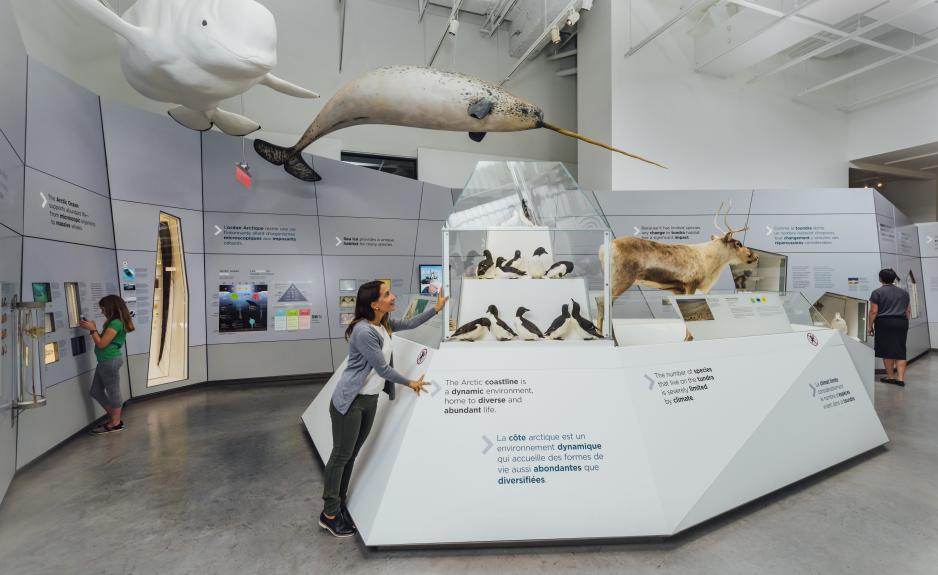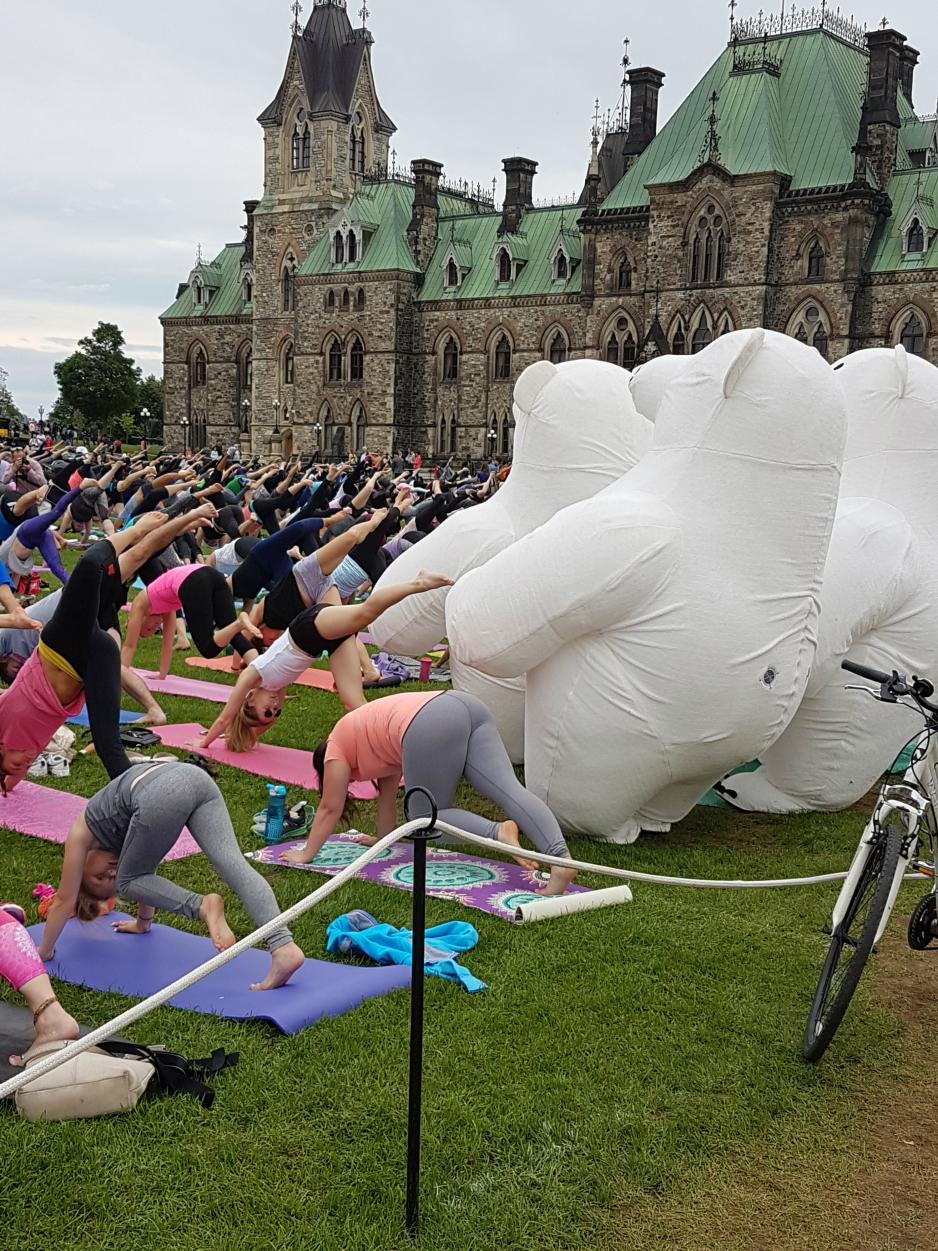New Permanent Arctic Exhibit in Canada’s Capital

This summer, the Canadian Museum of Nature opened their new permanent exhibit: The Canada Goose Arctic Gallery. This exhibit is bringing the realities of living in the North to the Canadian capital.
In June this year, the Canadian Museum of Nature opened the doors to their new permanent Arctic exhibition. The Canada Goose Arctic Gallery brings museum-goers through the realities of northern life and has been a great success this summer. Caroline Lanthier, a Project Manager and Senior Content Advisor at the Canadian Museum of Nature explained to the High North News the idea behind the exhibition. "What we really wanted people to grasp in the gallery is that the Arctic is changing, the Arctic is changing faster than any other place on earth, especially when we look at the climate."
Main Message of the Gallery
The Canada Goose Arctic Gallery has many messages, but the most important that Ms. Lanthier re-emphasized was that, "Arctic is changing fast and what happens in the Arctic does not stay in the Arctic."
The exhibition is designed to inform visitors to the museum, both Canadians and those from other countries, about the realities of living in northern Canada, the changing landscape, the culture, and the various species. Although the focus of the exhibition is firmly on the Canadian Arctic, there are some international pieces as well, including in the Arctic Communities Interactive which highlights, "Kautokeino, a Sami community in Norway."
Ms. Lanthier mentioned that in the past she had learned many southern Canadians do not have a good grasp on the Arctic as a region. She commented that often, "people see the Arctic as very very far, they know very little of the Arctic." This exhibit is a chance to change the knowledge that people possess about the region.
But the creation of the exhibition was not without challenges, Ms. Lanthier commented that the project took a team of 8-10 people over two years from conception to completion, with many stops and starts. But, it was important for the museum to have it done in 2017; this year is Canada’s 150th birthday as a nation, and this exhibition is, as a press release stated the, "museum’s key contribution to celebrate Canada’s 150th anniversary".
Engagement with Indigenous Peoples
One of the most important aspects of the exhibit is the connection of the natural world with the realities of life in the north and the people who live in the region. As Laurel McIvor, a Senior Content Developer and the Coordinator of the Arctic Advisory Committee said to the High North News, "People are really happy to see the cultural proponent presented, happy that we at least attempted to provide different perspectives, we got a lot of really positive feedback for that."
Presenting such a cultural proponent in an exhibition can be challenging, especially for a museum that focuses on natural history. But the museum was aware of these challenges and did their best to overcome them. Ms. McIvor mentioned, "as a natural history museum, we of course have natural history expertise but we don't have cultural expertise. And so we developed an advisory committee to help fill that gap and to ensure that we were telling the story from local perspectives and in an appropriate way."
But this was not without its own set of challenges. As the exhibition progressed it became clear that there are many voices, languages and cultures in the Arctic. The museum did their best to incorporate these various peoples in the discussion, but was not always successful in this challenging endeavour. Ms. McIvor commented on the challenges of engaging with various Indigenous peoples saying, "initially we had a Gwich'in member on our advisory committee, but she felt the focus of what we were planning [...] was really more of a maritime Arctic focus instead of the Gwich’in and Dene in Canada which is Northern Boreal habitat."
Yet, there is a piece of the exhibition which is striving to tell various voices from across the region. This part, called Northern Voices, is a rotating piece of the exhibition, which is set to change every two years. The thought behind this rotating piece is that it will, as Ms. McIvor commented, "provide an opportunity for northern communities to present something of interest to them from their perspectives."

Polar Bears in Ottawa
To help bring attention to the launch of the new exhibit, the museum brought some interesting friends to town. In fact the museum, as a marketing campaign, brought several inflatable polar bears to wander around the capital. Kasia Majewski, the head of marketing and external relations for the Museum of Nature, told High North News about the event. "The polar bears were looking for the Arctic in Ottawa. And you could see them around town riding a double deckers bus, they visited Parliament Hill and partook in some yoga, they wandered around Park Street and they actually met all the bear statues in downtown Ottawa."
The marketing campaign was a success said Ms. Majewski, the Ottawa community was thrilled to welcome the bears to various experiences. The real point, she mentioned was, "was to engage the imagination of the public." Not only did the polar bears make it around town, but Ms. Majewski commented that they were also part of the half-time show for the local Canadian football team, the Ottawa Redblacks, and invited to CTV and various events of the sort.
Success of the Summer and Looking to the Future
The exhibition opened up earlier this summer and both Ms. Lanthier and Ms. McIvor commented on the success of the exhibition. From the museum’s own calculations they have found that people have spent approximately 28 minutes in the exhibition, which is about 8 min more than average. However, Ms.McIvor mentioned that summer crowds are often trying to see the entire museum in one day, and that the fall and winter will likely lead to longer engagement times.

What are the long term plans for the exhibition? Well although it is a permanent exhibition, Ms. Lanthier says that, "galleries are there for about 10 years, but after that we do a refresh or [...] a re-do." So the exhibition will be there for 10 years at least and then re-evaluated. This does not mean it will stay the same for 10 years. As mentioned, the Northern Voices piece will be changed every two years and Ms. Lanthier said that various other pieces will continue to be updated, including something called People Capsules. These capsules allow visitors to hear and see stories from various northerners and scientists.
The long-term success of the exhibit is to not only dependent on teaching museum-goers about the north as an important region, but also to create a space in Ottawa for Arctic conversations. Ms. McIvor commented that the hope is Arctic conferences, meetings and events will take advantage of the exhibition and the museum as a space.
